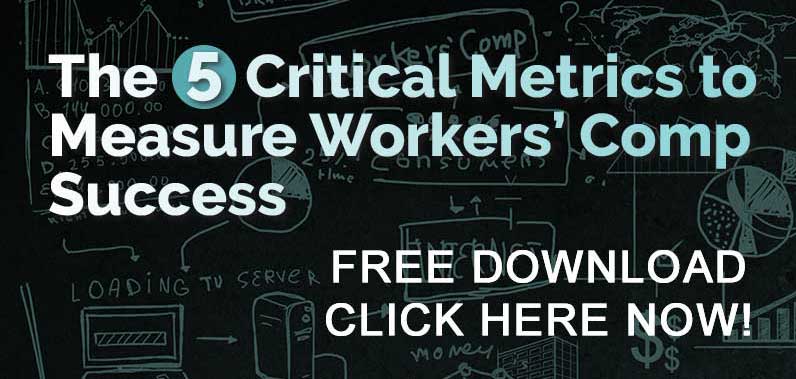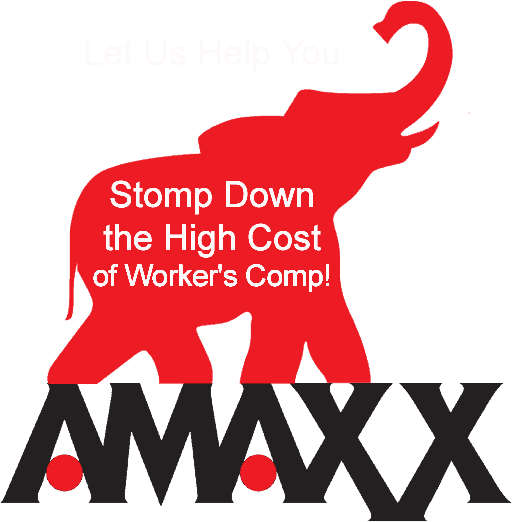While the cost of workers’ compensation insurance varies from state to state, the process to calculate the cost is about the same for all states. The key factors in the cost of work comp insurance for a business include:
- The amount of payroll for the company
- The frequency and severity of injuries
- The risk classification of the employees
- The base rate
- The company’s claim history
- Discounts provided by the insurance company
Payroll
When you apply for workers’ compensation insurance, you need to provide the insurance company with payroll information for each type of job classification within your company. The larger the number of employees and the higher the payroll, the higher the cost for your workers’ compensation insurance.
 Frequency
Frequency
In calculating the insurance premium for your business, the insurance company’s underwriter looks at the total number of injuries and the types of injuries. If a company has numerous carpal tunnel injuries or numerous back injuries or numerous lacerations or other types of similar injuries that can be grouped together, the underwriter considers a high frequency (higher than the norm) to be an indication of weak spots within the safety program of the employer. Also, if there is a wide range of injuries and the rate of occurrence is greater than the norm, the underwriter considers the employer to have on overall inadequate safety program.
Severity
The underwriter measures the severity of the injuries by looking at both the amount of money spent on medical payments and the amount spent on indemnity benefits. If the data is adequate, the underwriter analyzes the amount of payments to the treating physician, the amount to hospitals, the amount for rehabilitation, etc. Also, the underwriter analyzes the amount paid for temporary total disability, temporary partial disability, permanent partial disability and permanent total disability.
Risk Classification Exposure
There are numerous classification levels for employees. The greater the probability of someone being injured, the higher the risk classification. High rate classifications include jobs like fire fighters, skyscraper window washers, roofers, coal miners, etc. The low risk classifications include clerical employees, librarians, clergy, etc. The higher the probability of someone being hurt on the job, the higher the cost for the work comp insurance.
Base Rate
The underwriter has a base rate charged for each risk classification level. To calculate the dollar cost of the work comp insurance, the dollar amount is multiplied by one percent per $100 of total payroll. For example, the base rate for the firefighter could be $10.50 per $100 of payroll, while the base rate for the clerical staff could be $1.50 per $100 of payroll. The cost of the work comp insurance for the firefighter making $800 per week would be $84 per week ($800 X $10.50 x .01) , while the cost for the work comp insurance for the clerical person making $400 per week would be $6 per week ($400 x $1.50 x.01).
[If you are tempted to classify your fire fighters as clerical staff, don’t. Not only will you lose your integrity, you will also get caught during the premium audit, resulting in a bill for the amount you should have paid, plus your company’s work comp policy will probably be canceled.]Experience Modification Rate
The underwriter can modify – increase or decrease – the base rate. The modification of the base rate depends on the frequency and severity of the injuries the employer has incurred in the past. The underwriter will look at your claims history and compare the number of claims and the cost of those claims to other companies within your industry. If you have good safety program and your claim history is better than average, the cost of your work comp insurance will be lower than the average cost. Conversely, if your claim history reflects higher than normal frequency or higher than normal severity, your work comp insurance cost will be higher than average.
Discounts
In calculating the cost of the premium for your company’s work comp insurance, the underwriter often applies discounts. For example, if you have a strong safety program in place, the underwriter can provide a discount for it. If you have an established drug-free work place program or an established health and wellness program, the underwriter can provide discounts for those programs. If you wish to carry a deductible, where you reimburse the insurer for the first $1,000 or some other stated amount of each work comp claim, the insurer can provide a discount. Very large employers may also receive a discount as the insurance company may want the cash flow a large policy brings in to them.
The prudent shopper for workers’ compensation insurance is like the prudent shopper for any other service. With the assistance of your broker, you compare prices and coverage to get the best overall work comp insurance program for your company.




